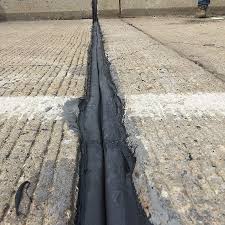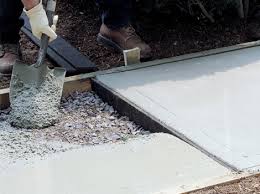Concrete expansion joint & Its 6 Types
A concrete expansion joint or isolation joint is a gap that allows the concrete to expand and contract when the temperature changes. Expansion joints form a break between the other parts of a structure and concrete to allow movement without causing stress in concrete, leading to cracking. Expansion joints should be used in large concrete slabs such as concrete driveways and foundations. Need concrete expansion joints.
All concrete will shrink slightly as the concrete dries and when concrete is set and then will contract and expand depending on the ambient temperature. Concrete prevents cracks from forming. Concrete expansion joints should be involved to allow for movement, particularly in slabs with a surface area exceeding 6-meter square.
They are particularly important where there have been consecutive concrete pours and are also useful when laying concrete within an area bordered by walls or buildings and if objects such as maintenance hole covers need to be involved. If concrete construction joints are needed, it would be advisable for them to be specified by a structural engineer and designed.
Types of concrete expansion joints
Details explain below.
Asphalt expansion joint.

It comprises a blend of mineral fillers, vegetable fibers, and asphalts formed under pressure and heat between two asphalt-saturated liners. As a result, asphalt expansion joints are flexible, waterproof, self-sealing, and permanent.
Fiber expansion joint

This is composed of cellular fibers securely uniformly bonded and saturated together with asphalt to assure long. It is resilient, flexible, versatile, and non-extruding. When compressed to half of the original thickness of fiber expansion joints, fiber expansion joints will recover to a minimum of 70% of their original thickness.
Ceramar expansion joint.
Ceramar joint is also known as a flexible foam expansion joint filler composed of a different blend of isomeric polymers in a very small, closed-cell structure. Grey in color is a resilient material, lightweight, and highly flexible, offering recovery qualities of over 99 percent. ceramar mini closed-cell structure is virtually non-absorbent. As a result, ceramic can be formed or wrapped around circular or curved surfaces.
Sponge rubber expansion joint.
Sponge rubber is produced to a uniform density and thickness from top-quality, blown sponge rubber, and gray-colored. Sponge rubber expansion joints are easily compressed and have a recovery of 95 percent or more of the original thickness and a density of not less than 30 lb/ft3 or480.56 kg/ft3.
Cork expansion joints.

Cork joints are produced from selected, granulated, clean cork bonded with a phenolic resin. Cork is highly resilient, will compress without recovers, and extrusion to 95 percent of cork expansion original thickness after 50 percent compression.
Self-expanding cork expansion joints.
Self-expanding cork is compressed and formed under pressure and heat to permit expansion above to 140% of the original thickness after installation, which joints allow the filler to compensate for concrete shrinkage. In addition, the self-expanding cork expansion joints under normal humidity conditions after installation activate the self-expanding properties of the cork joints. Therefore, the product may be cut on the job site to the exact size required.
Tips for placing concrete expansion joints.
- Give the joints around 25 to 30 times the slab thickness apart. So, for a slab that is 100mm thick, the expansion joints should be placed around 3 meters apart.
- Ensure to keep the expansion joints cut deep enough: keep the expansion joints need to be at least a quarter of the thickness of the slab. For a 10 cm slab, cut the joints at least 2.5cm deep.
- If you’re cutting joints after the concrete has been poured concrete, don’t keep it too long. Concrete may crack if the joints don’t cut within 12 hours after finishing.
- Placing joints under walls will mean expansion joints won’t be seen.
- This joint is most effective when the aspect kept the slab 1:1, for example, 5ft x 5ft. Suppose the slab is narrower than it is long. In that case, it is possible to increase this to a maximum aspect ratio of slab 1.5, for example, 2ft x 3ft. Don’t leave the placing of concrete expansion joints to chance and enlist the services of a structural engineer if several are needed.
Installing concrete expansion joints
We can install concrete expansion joints after or before the concrete is laid. In the first instance, flexible material is along the length of the joint before the concrete is poured. Alternatively, once the concrete is completed, so you can groove cut in the concrete, concrete will control where the concrete will crack, leaving a neat saw cut at the surface and concrete to allow the joint materials to be added where needed. Still, care must be taken to ensure the correct depth is achieved.
We Love Cricket